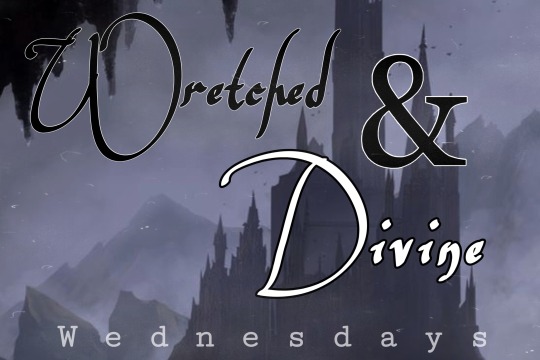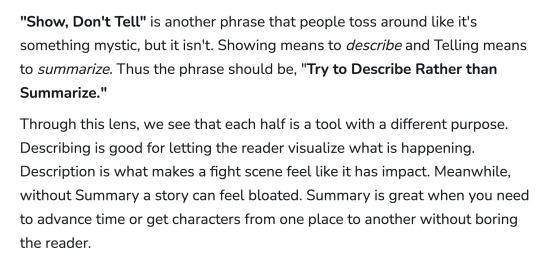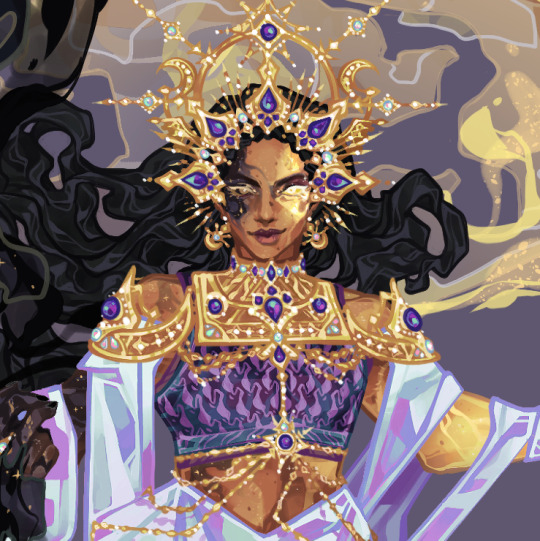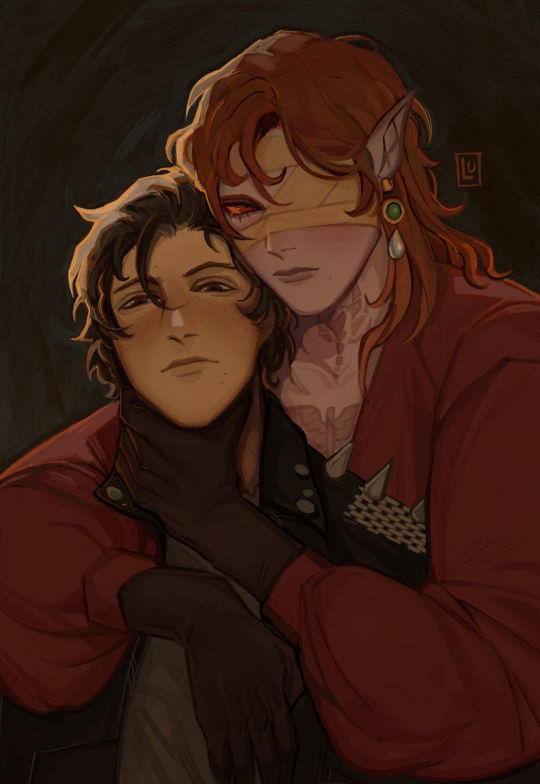My secondary blog dedicated to asking all about original characters and their stories! Main blog @purplezebraproductions !
Don't wanna be here? Send us removal request.
Text


“Which one of your OCs is the best cook?”
Prompt made by @tell-me-about-your-ocs
Without a doubt Hein is the best cook out of the W&D gang. As an Essence he was trained to be perfect in just about every field (fitting a servant).
And as Ishida says Hein is “quite the culinary artist” 😊
That being said, Ishida and Ryuji are actually decent cooks as well.
Myya & Kai-Arris should not be let near a kitchen. It’s in everyone’s best interest that they stay far, far away. 😂
Takashi shows promise and would do well enough following a recipe with some supervision. 😆
Tag list : @littleturtle95 @phoenix-and-dragon @khaleesiofalicante @my-archerboy @clumsyowl-in-a-fandom @radisv @raziyekroos @magnus-the-maqnificent @spotsandclawsthings @sassybookworm2020 @la-lune-chaotique @elettralightwood @high-warlock-of-brooklyn @axhicleos
28 notes
·
View notes
Text
@tell-me-about-your-ocs
NAME: Anna
PRONOUNS: she/her
USERNAME/URL: tell-me-about-your-ocs
SHORT BIO: My page is for writers and anyone with original stories or original characters. I often ask almost daily questions about your stories or original characters and respond to the responses of my followers. Sometimes we play writing games, talk about WIPs, share original work and art, and collaborate on writing.
WHO I’D LIKE TO CONNECT WITH: Anyone who feels like they need a place to talk about their own work, receive feedback, or get to know a large group of people and display their work.
>> join the writeblr directory
11 notes
·
View notes
Text
Reblog if I can put some lines from my WIP in your inbox
436 notes
·
View notes
Text
If you’re an active writblr account and want to find others in the community:
Send me your post introducing yourself to the community and I’ll share it here!
(If you don’t have one, typically introductions have what you are like, some put the moniker they go by, what you write about, who you’re looking to connect with, and types of stories or things you’re not interested in/can’t read).
11 notes
·
View notes
Text
Non-writing activities that actually help your writing
To get better at writing, you have to write. Yes… But what about the times when you genuinely don’t feel like it?
First of all, it’s alright! It’s not the end of the world! You’re not a failed writer if you have a down day. But if you really feel like doing something that pushes your writing along, but isn’t actually writing, here are some things you can do! →
📚 Planning out your next chapter When in doubt, plot it out. Sometimes you might simply be stuck because you don’t have a clear path forward. A simple outline of all the major beats in your next chapter can really put things into perspective.
📚 Writing an impromptu scene Every writer goes off and fantasizes about a scene in their novel that isn’t actually part of the plan. Treat it as if it was a fanfic of your own novel and give it a shot! Writing it as fanfiction takes the pressure off, and might just get your creative juices flowing again.
📚Reading a similar book for research This is a super helpful and fun way of doing research for your book. Dig out similar books in the genre and get reading. A great way to get book recommendations is to speak to some bookish people and tell them a little bit about the story you’re writing. Often, they can have great recommendations of a similar book vibe that could help you along.
📚 Actually research For whatever type of book you’re writing, you’re going to have to do some research. Whether it’s describing architecture in a fantasy world, or making sure your facts are correct in a historical setting, research is a crucial part of writing. Perhaps if your creative side of the brain isn’t feeling up to it right now, your logical one might be of us and help you gather some facts to make your writing more authentic.
📚 Edit or rewrite previous chapters If you have the need to work on your project, but can't bring yourself to write some more, work with what’s already there. It’s inevitable that some of the chapters you wrote, you aren’t entirely happy with. This might be the time to try something new - open that chapter side by side with a fresh document and rewrite it by changing one integral part of it.
📚 Think on it Yes, we all fantasize about our projects and our characters. But how often do you actually stop and truly think about your story as a whole? How often do you try to figure out that plothole before saying you’ll leave it for later? It might help to meditate for a bit, clear your head of distracting thoughts and focus on the problem in your writing that you need to solve.
3K notes
·
View notes
Quote
The idea is to write it so that people hear it and it slides through the brain and goes straight to the heart.
Maya Angelou (via writingdotcoffee)
221 notes
·
View notes
Text
Six Ways To End Your Story
Hi, everyone! Someone kindly asked for advice on how to end a story so here it is for everyone!
Six Types of Story Endings
While every story has to end its own way, there are six general types of ending. Which one you go for will depend, of course, on the story you’re telling, and maybe also on the tropes or conventions of the genre you’re working within (if you’re working within a genre at all).
The six types of story endings include:
Resolved ending
Unresolved ending
Expanded ending
Unexpected ending
Ambiguous ending
Tied ending
What Is a Resolved Ending?
A resolved ending leaves the reader with no lingering questions or loose ends A resolved ending is part of most classic fairy tales (“And they all lived happily ever after…”), but also of countless classic novels.
Consider the ending of Jane Austen’s Pride and Prejudice, a classic of literary fiction and the inspiration for countless romance novels. At the end of the book, Elizabeth Bennet and Mr. Darcy marry, and we’re led to believe that their marriage will be long and happy. Not only that, but the rest of Mr. Bennet’s marriageable daughters have settled down in matches appropriate to their characters. In other words, there are no lingering questions or tensions.
Remember, a resolved ending isn’t necessarily a happy ending. Think of any of Shakespeare’s tragedies, in which the protagonist and most of the other major characters usually wind up stabbed, poisoned, or executed.
What matters most in a resolved ending is that all of the threads of the novel have been clearly and satisfying resolved.
What Is an Unresolved Ending?
Sometimes, the end is not really the end. That’s the case with an unresolved ending. This is the kind of ending that leaves the reader with more questions than answers. Ending on a cliffhanger has the potential to be a frustrating experience, but that frustration can also be satisfying if the story calls for it.
Unresolved endings are popular choices for books in a series, because it leads the reader to the next book.
What Is an Expanded Ending?
An expanded ending often takes the form of an epilogue. As the name implies, it expands the world of the story beyond the events of the narrative itself. That usually involves a jump forward in time, and occasionally a change in perspective as well. (Dostoevsky’s classic Crime and Punishment ends on just such a note, as does Tolstoy’s War and Peace.) Like an unexpected ending, an expanded ending may reframe the way the reader has been thinking about the story.
One advantage of an epilogue is that it allows the writer to answer questions that might not be possible to answer in the space of the main narrative (for instance, how things turned out a decade or more after the main events of the story).
What Is an Unexpected Ending?
An unexpected ending is one the reader likely didn’t see coming. The twist ending can be earth-shattering, or clever and subtle. The trick to pulling off a great surprise is that it should seem inevitable in hindsight. Very few readers are likely to be on board for an ending that seems to truly come from nowhere, but if the ending makes sense they’re more likely to appreciate the subtle machinations and plot twists it took to get there.
A good ending avoids deus ex machina, a Latin expression meaning “god from a machine.” In the context of fiction, a deus ex machina is a heavy-handed device that abruptly and definitively resolves all the story’s problems in a way that doesn’t feel natural to the story.
For instance, a previously unknown rich uncle appearing from nowhere to give the poor striving protagonist a vast fortune may certainly be a surprise, but it’s not likely to satisfy your readers. Remember, a good twist is one that the writer has left clues for all along.
What Is an Ambiguous Ending?
An ambiguous ending is one that’s open to interpretation. While an unresolved ending doesn’t give the reader enough information to say what’s going to happen next, and an ambiguous ending might allow two different readers to come to two completely different conclusions. Of all the endings, the ambiguous one demands the most involvement from the reader, since they are actively invited to think about the significance of events for themselves.
Take a quick look at the ending to Charles Dickens’ classic Great Expectations. In the last lines of the novel, the main character Pip takes the hand of the widow Estrella and says he sees “no shadow of another parting from her.” But is Pip’s vision reliable? Do they stay together or is another parting in the future? The novel leaves the reader with both tantalizing possibilities.
What Is a Tied Ending?
A tied ending is on that brings the story full circle—it ends where it begins. This type of ending follows the classic Hero’s Journey, which is common to many myths and folktales from around the world, but it’s also a popular choice for many works of literary fiction trying to capture the cyclical nature of time. James Joyce’s famously beguiling Finnegan’s Wake even ends on a sentence fragment that literally completes the very first sentence of the novel.
As a writer, you’ll need to make sure that the journey to this point felt worthwhile. Ending up right where you started can feel pointless if the journey there and back wasn’t meaningful.
There you have it folks, and kind ask, I hope this helps anyone who is struggling with their story endings!
Follow, reblog and comment if you find these helpful!
2K notes
·
View notes
Text

Y'all wanna see the OCs I made in 2021-2022?
153 notes
·
View notes
Text
Encouragment for writers that I know seems discouraging at first but I promise it’s motivational-
• Those emotioal scenes you’ve planned will never be as good on page as they are in your head. To YOU. Your audience, however, is eating it up. Just because you can’t articulate the emotion of a scene to your satisfaction doesn’t mean it’s not impacting the reader.
• Sometimes a sentence, a paragraph, or even a whole scene will not be salvagable. Either it wasn’t necessary to the story to begin with, or you can put it to the side and re-write it later, but for now it’s gotta go. It doesn’t make you a bad writer to have to trim, it makes you a good writer to know to trim.
• There are several stories just like yours. And that’s okay, there’s no story in existence of completely original concepts. What makes your story “original” is that it’s yours. No one else can write your story the way you can.
• You have writing weaknesses. Everyone does. But don’t accept your writing weaknesses as unchanging facts about yourself. Don’t be content with being crap at description, dialogue, world building, etc. Writers that are comfortable being crap at things won’t improve, and that’s not you. It’s going to burn, but work that muscle. I promise you’ll like the outcome.
39K notes
·
View notes
Quote
I have to write to be happy whether I get paid for it or not. But it is a hell of a disease to be born with. I like to do it. Which is even worse. That makes it from a disease into a vice. Then I want to do it better than anybody has ever done it which makes it into an obsession. An obsession is terrible. Hope you haven’t gotten any. That’s the only one I’ve got left.
Ernest Hemingway (via writingdotcoffee)
427 notes
·
View notes
Text
Starting Strong Scenes in Your Writing
Scenes are the fundamental building blocks of novels and short stories, and each one should propel a story toward the climax.
Generally speaking, your scene structure should mirror the story structure. In other words, take a novel-writing approach to a scene, crafting a beginning, middle, and end. Like a story, the beginning of a scene should have a strong entry hook that pulls the reader in.
Start with the setting. Often a new scene signifies a change in time and location. Establishing the setting at the top of a scene helps your readers get oriented. It also sets the tone and mood of what will unfold in the coming pages. A setting can serve as much more than a backdrop in literature. Have your scene take place somewhere that builds tension and hinders your protagonist. If you’re writing a thriller, describe a dark and foreboding place where the worst might happen. Be descriptive and use sensory details to make your setting come alive before you jump into the action.
Use visual imagery. In screenwriting, writers have to think in pictures. What images will excite an audience at the top of a scene? Your approach should be the same when writing any kind of fiction. As you write the opening of a scene, use descriptive language to engage a reader through detailed imagery. Think like a screenwriter as you’re writing scenes.
Drop the reader into the middle of the action. Hit the ground running by starting a great scene in media res. It doesn’t have to be a fight scene or a car chase, but physical movement creates momentum and builds tension in a story. It’s also a way to instantly engage a reader. Be sure you begin the scene before the high points of the action so you build up to the scene’s climax.
Write a character-driven scene opener. A good scene starts by giving characters a goal. Start by putting your protagonist in a situation that creates an obstacle or opportunity for both the scene and the overarching storyline. Try starting with dialogue, like an intense conversation between your POV character and a mystery character whose identity is revealed later in the scene. If you’re writing from an omniscient third-person point of view, consider starting a scene with a secondary character, even the antagonist, and use it as a chance for deeper character development.
Summarize past events. You might choose to use the beginning of the scene to do a quick recap of what’s brought your main character to this place and moment in time. A summary is especially helpful if you’re writing in third-person and a new scene switches to a different character. Take the opportunity to remind the reader where we left off. Instead of a straight-forward update, get creative. Go into deep POV and let a character’s thoughts provide the summary instead of the narrator. Be sure to keep this summary brief—just a line or two—so you can get back into the action.
Introduce a plot twist. The start of a new scene is a chance to pivot and take your story in a new direction. Start a new scene at a turning point in your story. Dive into a flashback or character’s backstory, revealing critical information that changes the course of the story going forward.
Keep the purpose of the scene in mind. Effective scenes are clear about what they set out to accomplish and how they contribute to the overall plot. They might include plot points or reveal important information needed to move a story forward. Establish your scene’s intention from the very first word and keep the rest of the scene on point.
Rewrite until you’ve found the perfect scene opening. When you’ve finished the first draft of a scene, go back and read it through. If your scene needs something, but you can’t figure out what, it might be how the scene starts. The best way to know if your opening works is by reading how it plays with the rest of the scene. Review the last paragraph and see if it ties back to your beginning. If the intro feels weak, rewrite it. Maybe your real opener is hidden in plain sight somewhere else in the body of the scene.
Make sure your opening scene is your strongest. While your entire book should be filled with compelling scenes that start strong, the very first scene of your book needs to lead the pack. This is the reader’s introduction to your story and where you’re revealing the characters, the setting, and kicking off the plotline with the inciting incident. This first scene has to hook the reader from the first line so they keep turning the pages.
Read a lot of books. If this is your first novel and you need some inspiration and ideas to help you start off your scenes, start by reading other books. Choose a book by a bestselling writer like Dan Brown or Margaret Atwood. Study the different ways they approach every scene. Reading other authors is a great way to hone your scene-writing skills.
Follow like and reblog if you find these helpful!
6K notes
·
View notes
Text

2K notes
·
View notes
Text
My goal as a writer is to have people screenshot or type up my writing into quote posts that other people reblog as inspiration. It's a modest goal, but a cozy one, which makes it perfect.
#I think any recognition#of my writing would#send me into the stratosphere#because it says to me that#someone is thinking about my writing#more than just words on paper or on a screen#someone actually read it#and wanted to go back and find what they had been looking for
197 notes
·
View notes
Text

On "Show, Don't Tell" (from my latest writing Q&A)
2K notes
·
View notes
Text
Nervous Quirks for your Characters
Here's a short list of nervous quirks/habits for you to give to characters in your stories! Feel free to add on with more!
Lip biting (may result in scabbed lips)
Leg bouncing
Nail biting/picking
Skin picking
Nose scrunching
Adjusting clothing
Tapping feet/hands
Rubbing hands together
Rubbing feet together
Pacing
Stuttering/stammering
Losing track of time
Forgetting what they were talking about
Laughing
Nausea
Going silent/refusing to talk
Picking at face/skin
Constantly readjusting clothes
Rambling
Itching
Sweating/feeling hot
Distracting themselves
6K notes
·
View notes
Photo


The Celestial for @zorlok-if ! ( Zorlok is an extremely, extremely cool interactive fiction !! )
4K notes
·
View notes
Text

hold and dont let go
cillian belongs to @klimtsonian ✨
335 notes
·
View notes